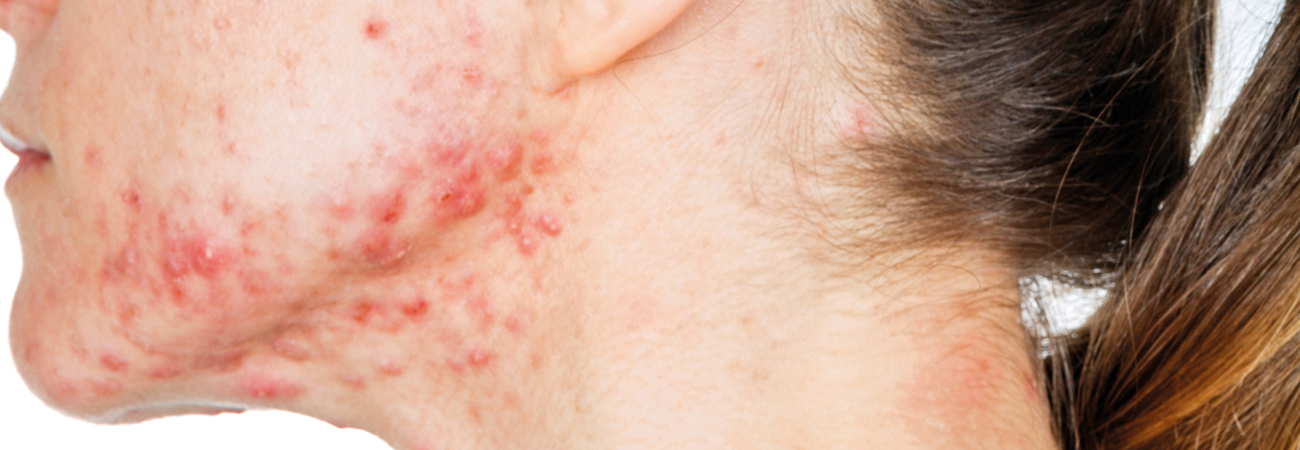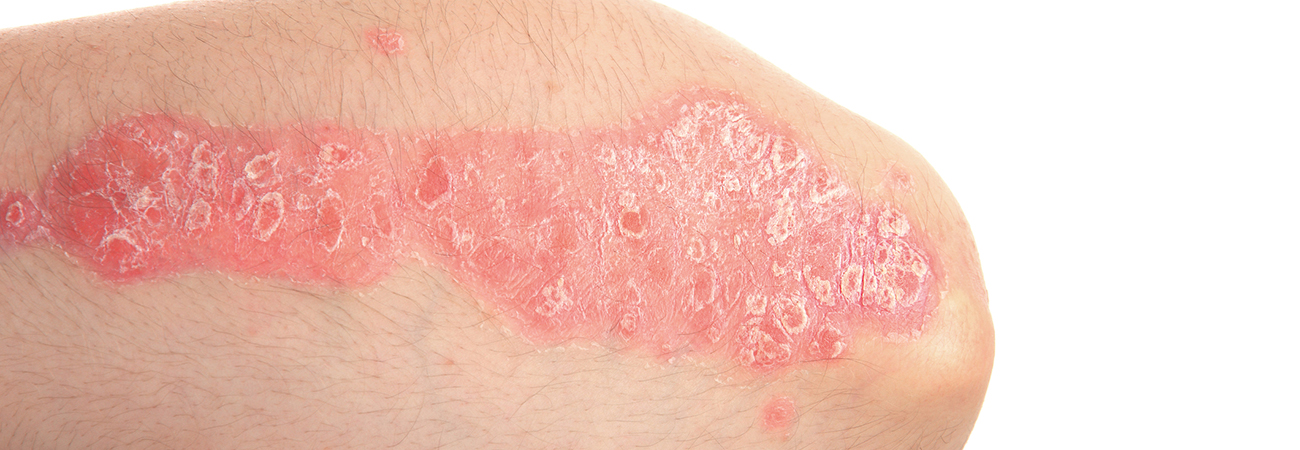
Managing common skin conditions
Skin provides a protective barrier against environmental factors as well as allergens and hazardous substances. It plays an important role in regulating body temperature, helping to prevent dehydration and protecting the body from the effects of too much heat or cold. Skin also acts as a sensory organ, allowing the body to feel sensations such as heat, cold, pressure, itching and pain.1
As skin has so many vital functions, it is important that it is kept healthy and that people with skin conditions manage them effectively. This module looks at some common skin conditions and how they can be recognised.
In the winter months, cold, dry and windy weather can cause water to evaporate from the skin, making it dehydrated. This may be further aggravated by central heating, causing symptoms of eczema and psoriasis to worsen.
Skin conditions, such as eczema and rosacea, can also flare up when exposed to hot and humid weather. Additionally, this type of weather can lead to pores being clogged, causing acne.

Acne3
Acne is a common skin condition that affects most people at some point. It causes spots and greasy skin and usually affects the face, back and chest. See this month’s In Practice – Healthy Skin, to find out about more about acne and how it can be managed.

Atopic eczema4
Atopic eczema is the most common form of eczema, a condition that causes the skin to become itchy, dry, cracked and sore. Some people only have small patches of dry skin, while others may have inflamed skin all over the body. Atopic eczema can affect any part of the body, but most often affects the hands, inside the elbows, backs of knees and the face and scalp in children.
Inflamed skin can appear red on pale skin, and darker brown, purple or grey on darker skin; it can be more difficult to see on darker skin. People with atopic eczema may have times when symptoms are less noticeable as well as times when symptoms are more severe; severe symptoms can have an impact on a person’s daily life. Using emollients can help to prevent the skin becoming dry.

Psoriasis5
Psoriasis affects around 2 per cent of people in the UK. It can start at any age but most often develops in adults under 35 years. The severity of psoriasis varies greatly from person to person.
Psoriasis causes red, flaky, crusty patches of skin covered with silvery scales. These patches usually appear on the elbows, knees, scalp and lower back, but can appear anywhere on the body.
People with psoriasis have an increased production of skin cells; skin cells are normally made and replaced every three to four weeks, but when a person has psoriasis, this process takes only three to seven days. The build-up of skin cells is what creates the patches associated with psoriasis. This process is thought to be related to the immune system.
There is no cure for psoriasis. However, there are treatments that can usually help keep symptoms under control:
- Topical – creams and ointments applied to the skin
- Phototherapy – the skin is exposed to certain types of UV light
- Systemic – oral and injected medicines that work throughout the entire body.

Rosacea6
Rosacea is a skin condition that mainly affects the face. It is more common in women (although symptoms can be worse in men) and people with paler skin. The symptoms of rosacea include redness across the nose, cheeks, forehead and chin that comes and goes, and a burning or stinging sensation when using water or skincare products.
Rosacea can’t be cured but treatment prescribed by a GP can help keep symptoms under control. Other things people can do to help control their symptoms include:
- Using a high SPF sunscreen of at least SPF30 every day
- Trying to avoid heat, sunlight or humid conditions if possible
- Trying to cover the face in cold weather
- Using gentle skincare products for sensitive skin.
1. https://www.ncbi.nlm.nih.gov/books/NBK279255/
2. https://patient.info/news-and-features/how-your-environment-affects-skin-conditions
3. https://www.nhs.uk/conditions/acne/
4. https://www.nhs.uk/conditions/atopic-eczema/
5. https://www.nhs.uk/conditions/psoriasis/
6. https://www.nhs.uk/conditions/rosacea/
References last accessed April 2021.
